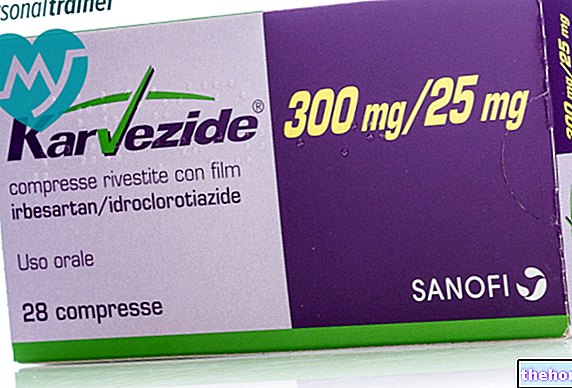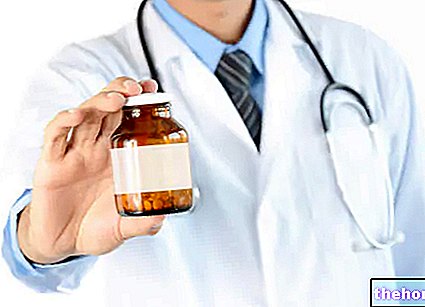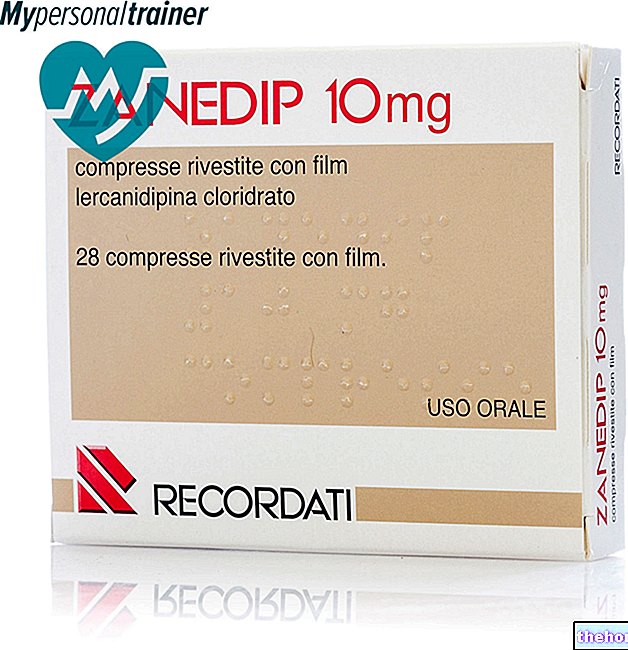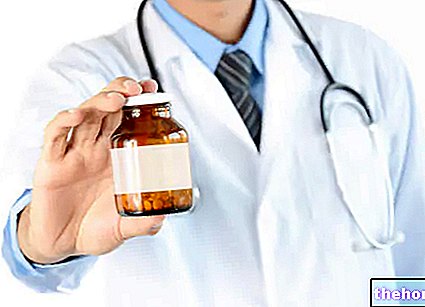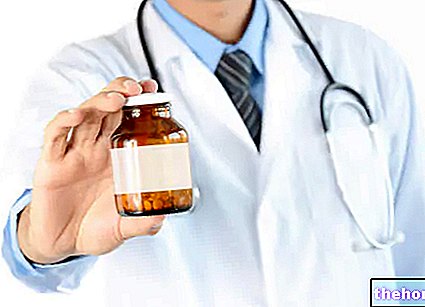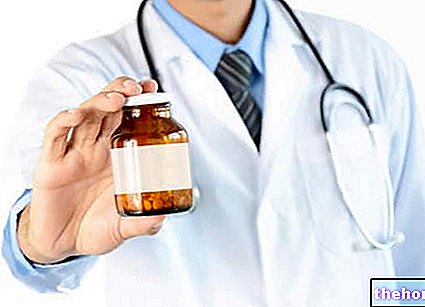Active ingredients: Manidipine
Manidipine DOC 10 mg tablets
Manidipine DOC 20 mg tablets
Why is Manidipine used - Generic drug? What is it for?
Manidipine DOC tablets contain 10 mg of the active substance manidipine, which belongs to a group of medicines called dihydropyridine calcium channel blockers.
Manidipine DOC tablets contain 20 mg of the active substance manidipine, which belongs to a group of medicines called dihydropyridine calcium channel blockers.
Manidipine is indicated for the treatment of mild to moderate essential hypertension (arterial hypertension).
Manidipine works by relaxing blood vessels to reduce pressure.
Contraindications When Manidipin should not be used - Generic drug
Do not take Manidipin DOC:
- if you are allergic (hypersensitive) to manidipine or other calcium channel blockers or to any of the other ingredients of manidipine tablets (see section 6 for a list of excipients).
- If you have unstable angina (chest pain not caused by stress or exercise or pain at night) or if you have had a myocardial infarction for less than 4 weeks.
- If you have untreated congestive heart failure
- If you have severe renal insufficiency (creatinine clearance <10 ml / min)
- If you have moderate to severe liver failure.
- If it is a child.
Precautions for use What you need to know before taking Manidipine - Generic drug
Take special care with Manidipin DOC
- If you suffer from mild liver damage, as the effects of manidipine may increase (see section 3 "How to take Manidipine DOC")
- If you are elderly, a dose reduction is required (see section 3 "How to take Manidipin DOC).
- If you suffer from heart disease
- If you take other medicines (see 'Taking Manidipin with other medicines').
Interactions Which drugs or foods can modify the effect of Manidipine - Generic drug
Tell your doctor or pharmacist if you are taking or have recently taken any other medicines, including medicines obtained without a prescription or medicines for any of the following conditions:
- Hypertension, such as diuretics and / or beta-blockers
- Viral and bacterial infections
- Mental disorders
- Irregular heartbeat (such as amiodarone, quinidine, digoxin)
- Allergies (such as terfenadine, astemizole)
Taking Manidipine DOC with food and drink
Patients should not consume alcohol or grapefruit juice while taking manidipine.
Warnings It is important to know that:
Pregnancy and breastfeeding
Manidipine DOC should not be used during pregnancy. The use of manidipine should be avoided during breastfeeding. If use of manidipine is necessary, breastfeeding should be discontinued.
Fertility
Changes in the head of spermatozoa that can impair fertilization have been reported in some patients treated with calcium channel blockers.
Ask your doctor for advice before taking any medicine.
Driving and using machines
Be careful while driving or using machines as dizziness may occur.
Important information about some of the ingredients of Manidipin DOC
Manidipine DOC contains lactose which is a type of sugar. If you have been told by your doctor that you have an "intolerance to some sugars, contact your doctor before taking this medicine.
Dose, Method and Time of Administration How to use Manidipine - Generic drug: Posology
Always take Manidipin DOC exactly as your doctor has told you. If in doubt, consult your doctor.
If you feel that the action of Manidipin DOC is too strong or too weak, talk to your doctor or pharmacist.
Children should not take manidipine.
Your doctor will tell you how long the treatment will take. Do not stop treatment until your doctor tells you to.
The tablets should be taken in the morning after breakfast, with a little liquid and without chewing them.
The usual starting dose is 10 mg once a day.
If the antihypertensive effect of manidipine is insufficient after 2 - 4 weeks of treatment, the doctor may increase the dose to 20 mg once daily.
If you are elderly or suffer from kidney or liver dysfunction, your doctor may prescribe a reduced dose (10 mg once a day).
If you forget to take Manidipin DOC
If you have forgotten to take a dose, take it as soon as possible and then go back to your regular schedule.
Never take a double dose to make up for a forgotten dose.
If you stop taking Manidipin DOC
Contact your doctor before you stop taking Manidipin.
If you have any further questions on the use of this medicine, ask your doctor or pharmacist.
Overdose What to do if you have taken an overdose of Manidipine - Generic drug
If you (or someone else) have swallowed several tablets at the same time, or if you think a child has swallowed a few tablets, contact the nearest hospital emergency department or your doctor immediately. As with other calcium channel blockers, it is assumed that an overdose can cause "excessive peripheral vasodilation leading to a lowering of blood pressure and an increase in heart rate.
Side Effects What are the side effects of Manidipine - Generic drug
Like all medicines, manidipine can cause side effects, although not everybody gets them. The following side effects may appear with the use of Manidipin DOC.
Common (≥1 / 100, <1/10): headache, dizziness, vertigo, swelling caused by water retention, palpitations, hot flashes.
Uncommon (≥1 / 1000, <1/100): tingling sensation on the skin, weakness or lack of energy, rapid heartbeat, low blood pressure, difficulty breathing, nausea, vomiting, constipation, dry mouth, digestive disturbances , rash, eczema, increase in liver enzymes and / or increase in kidney parameters (your doctor is aware of this).
Rare (≥1 / 10,000, <1/1000): drowsiness, numbness, chest pain, angina, increased blood pressure, stomach pain, abdominal pain, redness of the skin, itching and irritability.
Very rare (<1 / 10,000): myocardial infarction, inflammation and swelling of the gums which usually disappear after discontinuation of treatment. In isolated cases, in patients with pre-existing angina pectoris, an increase in the frequency, duration and intensity of these attacks may occur.
Frequency not known: Extrapyramidal syndrome has been reported with some calcium channel blockers.
If any of the side effects gets serious, or if you notice any side effects not listed in this leaflet, please tell your doctor or pharmacist.
Expiry and Retention
Keep out of the reach and sight of children.
Do not use the medicine after the expiry date which is stated on the package after "Expiry".
The expiry date refers to the last day of the month.
This medicinal product does not require any special storage conditions.
Medicines should not be disposed of via wastewater or household waste. Ask your pharmacist how to throw away medicines you no longer use. This will help protect the environment.
Other information
What Manidipin DOC 10 mg contains
The active ingredient is 10 mg manidipine hydrochloride.
The other ingredients are: lactose monohydrate, maize starch, low-substituted hydroxypropylcellulose, hydroxypropylcellulose, magnesium stearate, riboflavin.
What Manidipin DOC 20 mg contains
The active ingredient is 20 mg manidipine hydrochloride.
The other ingredients are: lactose monohydrate, maize starch, low-substituted hydroxypropylcellulose, hydroxypropylcellulose, magnesium stearate, riboflavin.
Description of the appearance of Manipina DOC and contents of the pack
Manidipine DOC is available in 2 strengths: 10 and 20 mg.
The 10 mg tablets are round, convex, yellow in color, with a midline break.
The 20 mg tablets are oval, convex, yellow in color, with a midline break.
Manidipine DOC is available in the following pack sizes:
- 10 mg 28, 30, 90 tablets
- 20 mg 28, 30, 90 tablets.
Not all pack sizes may be marketed.
Source Package Leaflet: AIFA (Italian Medicines Agency). Content published in January 2016. The information present may not be up-to-date.
To have access to the most up-to-date version, it is advisable to access the AIFA (Italian Medicines Agency) website. Disclaimer and useful information.
01.0 NAME OF THE MEDICINAL PRODUCT
MANIDIPINA DOC TABLETS
02.0 QUALITATIVE AND QUANTITATIVE COMPOSITION
Manidipine hydrochloride 10 mg.
Excipients: lactose monohydrate 66.40 mg.
Manidipine hydrochloride 20 mg.
Excipients: lactose monohydrate 132.80 mg.
For the full list of excipients, see section 6.1.
03.0 PHARMACEUTICAL FORM
Tablet.
The 10 mg tablets are round, convex, yellow in color, with a midline break
The 20 mg tablets are oval, convex, yellow in color, with a midline break.
The score line is to help break the tablet for better swallowing and not to divide it into equal doses.
04.0 CLINICAL INFORMATION
04.1 Therapeutic indications
Mild to moderate essential hypertension.
04.2 Posology and method of administration
The recommended starting dose is 10 mg once a day.
After 2 - 4 weeks of treatment, if the antihypertensive effect is insufficient, it is recommended to increase the dosage to the usual maintenance dose of 20 mg once a day.
Use in the elderly
In view of the slowing of metabolic processes in elderly patients, the recommended dose is 10 mg once daily. This dosage is adequate in most elderly patients.
The benefit / risk ratio of each dose increase requires careful individual assessment.
Use in patients with impaired renal or hepatic function
In patients with mild to moderate renal impairment, caution should be exercised in increasing the dose from 10 mg to 20 mg once daily.
Due to extensive hepatic metabolism of manidipine, a dose of 10 mg once daily should not be exceeded in patients with mild hepatic impairment (see section 4.3 "Contraindications").
The tablets should be swallowed in the morning after breakfast, without chewing, with a little liquid.
04.3 Contraindications
• Hypersensitivity to the active substance manidipine or to other dihydropyridines or to the excipients of the medicine.
• Pediatric age.
• Unstable angina pectoris and myocardial infarction for less than 4 weeks.
• Untreated congestive heart failure.
• Severe renal insufficiency (creatinine clearance
• Moderate to severe hepatic insufficiency.
04.4 Special warnings and appropriate precautions for use
In patients with mild hepatic impairment, administration of the medicinal product should be done with caution as the antihypertensive effect may be enhanced (see section 4.2 "Posology and method of administration").
In view of the slowing of metabolic processes in elderly patients, a dose reduction is required (see section 4.2 "Posology and method of administration").
Manidipine should be administered with caution in patients with left ventricular failure, in patients with left ventricular ejection obstruction, in patients with right heart failure or sick sinus syndrome (without a pacemaker).
Since no studies are available in patients with stable coronary artery disease, caution should be used in such patients due to the possibility of an increased coronary risk (see section 4.8 "Undesirable effects").
This medicine must not be used in patients with rare hereditary diseases of galactose intolerance, the Lapp lactase deficiency or glucose-galactose malabsorption.
04.5 Interactions with other medicinal products and other forms of interaction
As with other dihydropyridine calcium channel blockers, the metabolism of manidipine is likely to be catalysed by cytochrome P450 3A4. Caution should be exercised when Manidipine DOC is co-administered with drugs that inhibit the CYP 3A4 enzyme, such as ketoconazole, itraconazole or with drugs that induce CYP 3A4, such as phenytoin, carbamazepine, phenobarbital and rifampicin and if necessary the manidipine posology should be adapted.
Other antihypertensive drugs
The antihypertensive effect of manidipine can be enhanced by the concomitant administration of diuretics, beta-blockers and in general with any other antihypertensive drug.
Alcohol
Like other vasodilator antihypertensives, the concomitant intake of alcohol requires extreme caution as it may potentiate their effect.
Grapefruit juice
The metabolism of dihydropyridines can be inhibited by grapefruit juice, resulting in an increase in their systemic bioavailability and an increase in their hypotensive effect. Therefore manidipine should not be taken at the same time as grapefruit juice.
Oral hypoglycemic agents
No interaction phenomena with oral hypoglycemic agents have been identified.
Amifostina
Increased risk of the antihypertensive effect.
Tricyclic antidepressants / antipsychotics
Increased antihypertensive effect and increased risk of orthostatic hypotension.
Baclofen
Potentiation of the antihypertensive effect. If necessary, monitoring of blood pressure and renal function and adjustment of the antihypertensive dose.
Corticosteroids, tetracosactide
Reduction of the antihypertensive effect (retention of salts and liquids caused by corticosteroids).
Alpha blockers (prazosin, alfusozine, doxazosin, tamsulosin, terazosin)
Increased antihypertensive effect and increased risk of orthostatic hypotension.
04.6 Pregnancy and breastfeeding
Pregnancy
No clinical data are available on the use of this medicinal product in pregnant women. Studies performed with manidipine in animals did not provide sufficient information on fetal development (see section 5.3 "Preclinical safety data"). Since other dihydropyridine medicinal products have been found to be teratogenic in animals and the potential clinical risk is unknown, manidipine should not be administered during pregnancy.
Feeding time
Manidipine and its metabolites are excreted in high quantities in female rat milk. Since it is not known whether manidipine is excreted in human milk, the use of manidipine should be avoided during breastfeeding. If treatment with manidipine is necessary, breastfeeding should be discontinued.
Fertility
In some patients treated with calcium channel blockers, reversible biochemical changes in the head of spermatozoa that can impair fertilization have been reported.
04.7 Effects on ability to drive and use machines
As dizziness as a result of the decrease in blood pressure may occur, patients should be advised to exercise caution while driving and operating machinery.
04.8 Undesirable effects
Numerous undesirable effects have been observed during treatment with Manidipin DOC and other dihydropyridines, with the following frequencies:
Common side effects are dose-dependent and usually disappear later during treatment.
Diagnostic tests
• Uncommon: Reversible increases in SGPT, SGOT, LDH, gamma-GT, alkaline phosphatase, BUN and serum creatinine.
Cardiac pathologies
• Common: palpitations, edema
• Uncommon: tachycardia
• Rare: chest pain, angina
• Very rare: myocardial infarction and in isolated cases, in patients with pre-existing angina pectoris, an increase in the frequency, duration and intensity of these attacks may occur.
Nervous system disorders
• Common: headache, dizziness and vertigo
• Uncommon: paraesthesia
• Rare: drowsiness and numbness
• Frequency not known: Extrapyramidal syndrome has been reported with some calcium channel blockers.
Respiratory, thoracic and mediastinal disorders
• Uncommon: dyspnoea
Gastrointestinal disorders
• Uncommon: nausea, vomiting, constipation, dry mouth, digestive disorders
• Rare: gastralgia, abdominal pain
• Very rare: gingivitis and gingival hyperplasia which generally cease upon discontinuation of therapy but require careful dental care.
Skin and subcutaneous tissue disorders
• Uncommon: rash, eczema
• Rare: erythema, itching.
Vascular pathologies
• Common: hot flashes
• Uncommon: hypotension
• Rare: hypertension
General disorders and administration site conditions
• Uncommon: asthenia
• Rare: irritability.
04.9 Overdose
There are no known cases of overdose. As with other dihydropyridines, it is assumed that an overdose may result in excessive peripheral vasodilation accompanied by severe hypotension and reflex tachycardia.
In this case, symptomatic treatment must be initiated promptly and appropriate measures to support the cardiovascular function must be adopted. Due to the prolonged duration of the pharmacological effects of manidipine, cardiovascular function should be monitored for at least 24 hours.
05.0 PHARMACOLOGICAL PROPERTIES
05.1 Pharmacodynamic properties
Pharmacotherapeutic group: selective calcium channel blockers with predominantly vascular effect.
ATC code: C08CA11.
Manidipine is a dihydropyridine calcium antagonist with antihypertensive activity and favorable pharmacodynamic activity on renal function.
A fundamental characteristic is its long duration of action, highlighted in vitro And in vivo and attributable to both the pharmacokinetic characteristics and the high affinity for the receptor site.
In numerous experimental hypertension models, manidipine was shown to be more effective and with longer activity than nicardipine and nifedipine.
Furthermore, manidipine showed vascular selectivity, especially on the renal area, with an increase in renal blood flow, a reduction in vascular resistance of the afferent and efferent glomerular arterioles and a consequent decrease in intraglomerular pressure.
This feature integrates with its diuretic property, due to the inhibition of water and sodium reabsorption at the tubular level.
In trials of experimental pathology, manidipine exerted, at only moderately antihypertensive doses, a protective effect against the development of glomerular damage from hypertension.
Education in vitro have shown that therapeutic concentrations of manidipine are able to effectively inhibit cell proliferative responses to vascular mitogenic factors (PDGF, Endothelin-1) which may represent the pathophysiological basis for the onset of renal and vascular damage in the hypertensive subject.
In hypertensive patients, clinically significant reductions in blood pressure persist for 24 hours after a single daily dose.
The decrease in arterial pressure, caused by the reduction of total peripheral resistance, does not induce a clinically relevant increase in cardiac rate and output during both short and long term administration.
Manidipine does not affect glucose metabolism and lipid profile in hypertensive patients with concomitant diabetes.
05.2 Pharmacokinetic properties
After oral administration, manidipine exhibits a peak plasma concentration at 2-3.5 hours, and is subject to a first pass effect.
The plasma protein binding is 99%. The drug is widely distributed in the tissues and is extensively metabolised, mainly by the liver. Elimination occurs mainly by the fecal route (63%) and to a lesser extent by the urinary route (31%).
No accumulation occurs after repeated administration. Pharmacokinetics in patients with renal insufficiency are not affected.
Absorption of manidipine is enhanced by the presence of food in the gastrointestinal tract.
05.3 Preclinical safety data
The results of the repeated dose toxicity studies revealed only toxic manifestations attributable to exacerbation of the pharmacological effects.
In animal studies the reproductive toxicology profile of manidipine did not provide sufficient information, although the studies performed do not indicate an increased risk of teratogenic effects.
In peri-postnatal reproduction studies in rats, the following adverse effects (prolongation of pregnancy, dystocia, increased fetal deaths, neonatal mortality) were observed at high doses.
Non-clinical studies did not reveal harmful effects in terms of mutagenesis, carcinogenesis, antigenicity or undesirable effects on fertility.
06.0 PHARMACEUTICAL INFORMATION
06.1 Excipients
Lactose monohydrate;
cornstarch;
low-substituted hydroxypropylcellulose;
hydroxypropylcellulose;
magnesium stearate;
riboflavin.
06.2 Incompatibility
Not applicable.
06.3 Period of validity
3 years.
06.4 Special precautions for storage
This medicinal product does not require any special storage conditions.
06.5 Nature of the immediate packaging and contents of the package
PVC / PVDC blisters sealed with Al / PVDC
10 and 20 mg: 28, 30, 90 tablets
Not all pack sizes may be marketed
06.6 Instructions for use and handling
Unused medicine and waste derived from this medicine must be disposed of in accordance with local regulations.
07.0 MARKETING AUTHORIZATION HOLDER
PHARMACARE s.r.l.
Via Marghera, 29
20149 Milan
Dealer for sale:
DOC Generici s.r.l.
08.0 MARKETING AUTHORIZATION NUMBER
"10 mg tablets" 28 tablets in blister PVC / PVDC -AL / PVDC AIC 039856012
"10 mg tablets" 30 tablets in blister PVC / PVDC -AL / PVDC AIC 039856036
"10 mg tablets" 90 tablets in blister PVC / PVDC -AL / PVDC AIC 039856048
"20 mg tablets" 28 tablets in blister PVC / PVDC -AL / PVDC AIC 039856024
"20 mg tablets" 30 tablets in blister PVC / PVDC -AL / PVDC AIC 039856051
"20 mg tablets" 90 tablets in blister PVC / PVDC -AL / PVDC AIC 039856063
09.0 DATE OF FIRST AUTHORIZATION OR RENEWAL OF THE AUTHORIZATION
22 October 2010
10.0 DATE OF REVISION OF THE TEXT
July 2015

